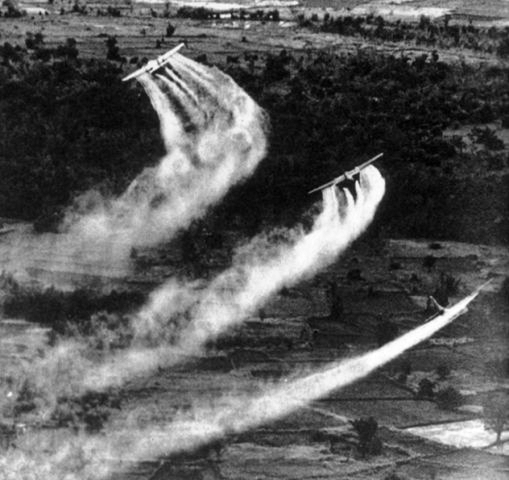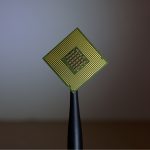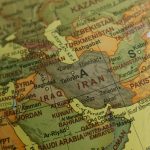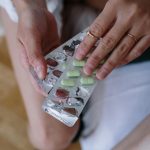Those for Whom the War Lives On – A View on The Aftermath of Agent Orange

As a geopolitical foreign policy strategy, the ‘Containment’ of a Communist spread into various regions of the Global South kept the United States actively engaged abroad throughout the Cold War. The aim was relatively clear and nowhere as coherent as in Indochina, where the so-called ‘Domino Theory’ had predominated US foreign policy decisions extending back to Eisenhower.
This prevalent perception among US strategists and successive administrations laid strategic importance on safekeeping Vietnam in particular, a loss of which was thought to catalyse further Communist victories in neighbouring states. It was this outlook that primed the United States to enter the region following the 1954 French loss at the Battle of Dien Bien Phu, which expulsed the waning French Foreign Legion and set the 17th Parallel between the North and South.
In this newly divided Vietnam, US support swiftly fell behind Ngo Dinh Diem, an ardent anti-Communist politician, who had pushed Emperor Bao Dai aside to become President of South Vietnam by 1955. Diem, nonetheless, was deeply unpopular domestically and increasingly with Washington, leading a brutal regime rife with political and religious persecution which provoked his eventual ouster in a coup d’état in 1963. The political instability that followed, along with the Gulf of Tonkin incident of 1964, saw a renewed commitment of US power to the region.
The conflict that resulted is often cited as one of the most pertinent examples of asymmetric warfare in the 20th century, and this for a good reason. For the most part unable to confront US forces in open battle, the National Liberation Front, otherwise known as the Viet Cong, resorted to guerrilla warfare, an unorthodox combat strategy often embraced by fighting forces at a material or numerical disadvantage.
With this in mind, and not entirely able to effectively strategise where and when to engage the enemy, the US began an aerial campaign with the intent of denying the Viet Cong cover under the dense jungle foliage of South and North Vietnam. Within a decade, between 1961 and 1971, US and South Vietnamese forces would spray upward of 73 million litres of high-concentrate herbicidal defoliants on the Vietnamese countryside; chemical weaponry nicknamed Agent Orange in reference to the corresponding coloured stripes found on its transport barrels.
The sustained spraying was conducted with little regard for the domestic population, their livelihoods, well-being, water security, ecosystems, or even US troops and personnel stationed and fighting on the ground. In its aftermath, the effects, intended or not, have been monumental. The utilisation of Agent Orange and similar toxic defoliants has not only caused unimaginable anguish for those directly exposed to it within the given timeframe, but still to this day, carries wide-reaching intergenerational consequences for millions.
Contamination is especially severe in areas referred to as dioxin-rich ‘hot-spots’; pockets of land sprayed with increased regularity due to strategic purposes, or as later uncovered, areas where emergency disposals or ‘dumping’ of the toxic defoliant occurred. Although dioxin, a by-product of Agent Orange is invisible to the naked eye, the inhabitants of these areas know all too well that it is nearby – flowing in their rivers, covering their soil, permeating their crops – the presence is felt, seen, and lived with.
In better acknowledgement of the scale of dioxin contamination in substantial segments of Vietnamese townships and agricultural lands, a look at the classification of tolerable dioxin levels – measured in parts-per-trillion (ppt TEQ) – is needed. A ‘tolerable’ degree, as given by the Vietnamese government, stands at around 120 ppt TEQ. Yet, recurring measurements and sampling efforts detail levels 20-times as high in many of these areas’ frequented water sources.
As disconcerting as this may be, one dioxin ‘hot-spot’ in particular stands out; namely the cluster of townships – home to over 100,000 people – that has emerged around the Bien Hoa Military Airbase since the end of the war. Here, over forty years on, soil samples have indicated that toxic dioxin-levels persist at 962,559 ppt TEQ, a figure 1,300 times higher than the relatively stricter standard set for industrial areas within the United States.
Having covered the geographic and historical specificities, it bears importance to highlight the human cost of Agent Orange. Gradually after the war, dioxin-linked diseases and congenital disabilities became more and more recurrent among the Vietnamese public, as well as returning American veterans and their future children. By estimates of the Vietnamese Red Cross, over three million Vietnamese have been adversely affected by the spraying, with an estimated 150,000 children being born with mental or physical disabilities as a direct consequence of altered gene expressions brought about by the dioxin exposure.
Although thoroughly proper measurements for dioxin toxicity – namely ppt – were not developed until the mid-1970s, it does not in any capacity remove the burden of responsibility from the military leaders and executives that deemed spraying toxic substances in masse over population centres and farmlands to be acceptable or justifiable. I stand by my opinion that the US Congress and present and future US administrations, although removed from direct culpability, must take greater strides to adequately fund the Department of Veterans Affairs and initiatives that alleviate the widespread medical complications, diseases, and congenital disabilities suffered by large portions of the Vietnamese population. The spraying may have ceased, the consequences it produced, however, live on. The onus to ‘right this wrong’ must be on the US government and complicit manufacturers.
Note: In 2017, Monsanto, the makers of Agent Orange were tried for ‘War Crimes’ by a non-binding People’s Tribunal at The Hague. The legal opinion delivered by the overseeing judges affirms that Monsanto violated the human rights to food, health, and a healthy environment of the Vietnamese people. [Linked]
Further Readings:
https://widerimage.reuters.com/story/legacy-of-agent-orange
https://corporateeurope.org/en/food-and-agriculture/2017/04/monsanto-tribunal-outcomes
Featured Image
USAF (https://commons.wikimedia.org/wiki/File:Agent_Orange_Cropdusting.jpg), „Agent Orange Cropdusting“, marked as public domain, more details on Wikimedia Commons: https://commons.wikimedia.org/wiki/Template:PD-US



